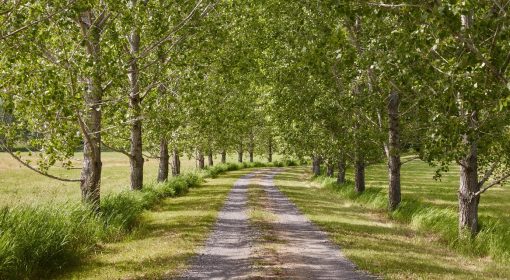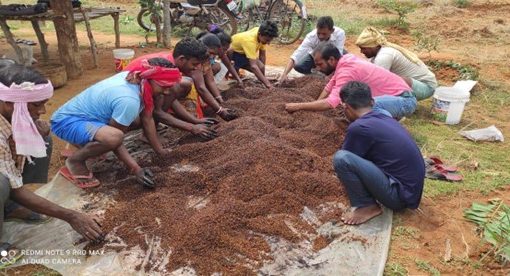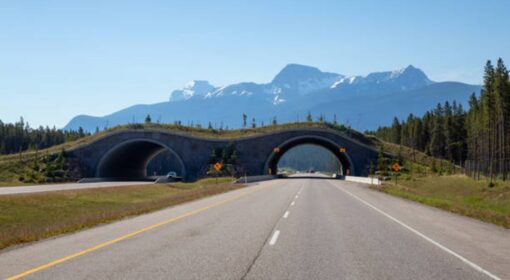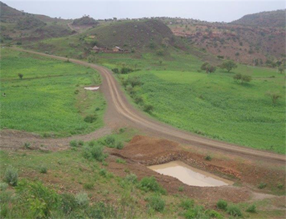Tackling Dust
Posted by Frank van Steenbergen and Marta Agujetas
March 09/03/2018
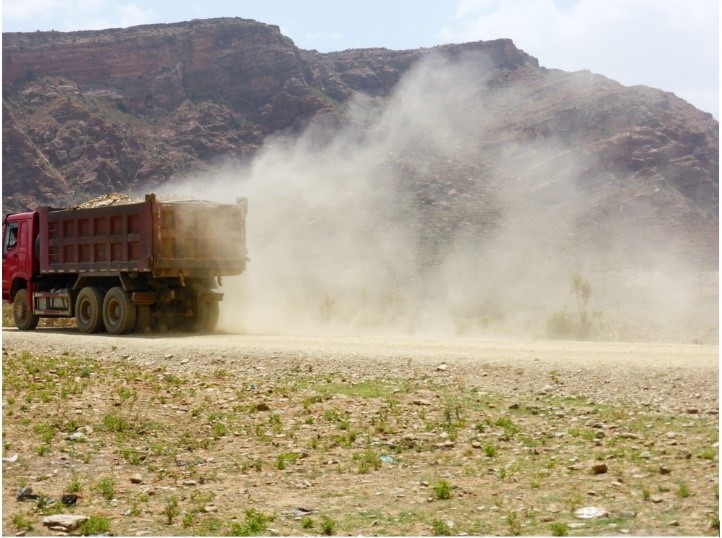
Planting trees, shrubs and grasses along the road is an often-overlooked option to create a productive asset and alleviate the negative effects of roads on the local environment. Negative effects include erosion, loss of fertile soils, gully formation that undermine road foundations, heavy dust, and more.
Dust lifted by vehicles along unpaved roads, has a direct effect on the health of people and livestock living near the roads and on crop production. In a survey in Ethiopia, close to 44% of the respondents said that the occurrence of dust had increased after construction of the road. Dust from unpaved roads settles on the flowers of crops, impeding them from producing fruit. Moreover, dust affects photosynthesis, respiration and transpiration and therefore interferes with plant growth.
The benefits of roadside vegetation are multiple. Roadside vegetation can create barriers against road dust. Trees and shrubs can trap the dust in their leaves, minimizing the amount of dust reaching farms and houses. Moreover, trees provide shade and beautify the area. This is a valuable service as many people walk long distances alongside the road. Grasses can help reduce the run-off velocity and trap sediments, thus reducing roadside erosion. By choosing commercially valuable species, roadside plantations will not only check the deterioration of roads and the environment but will also serve as a productive asset for local communities.
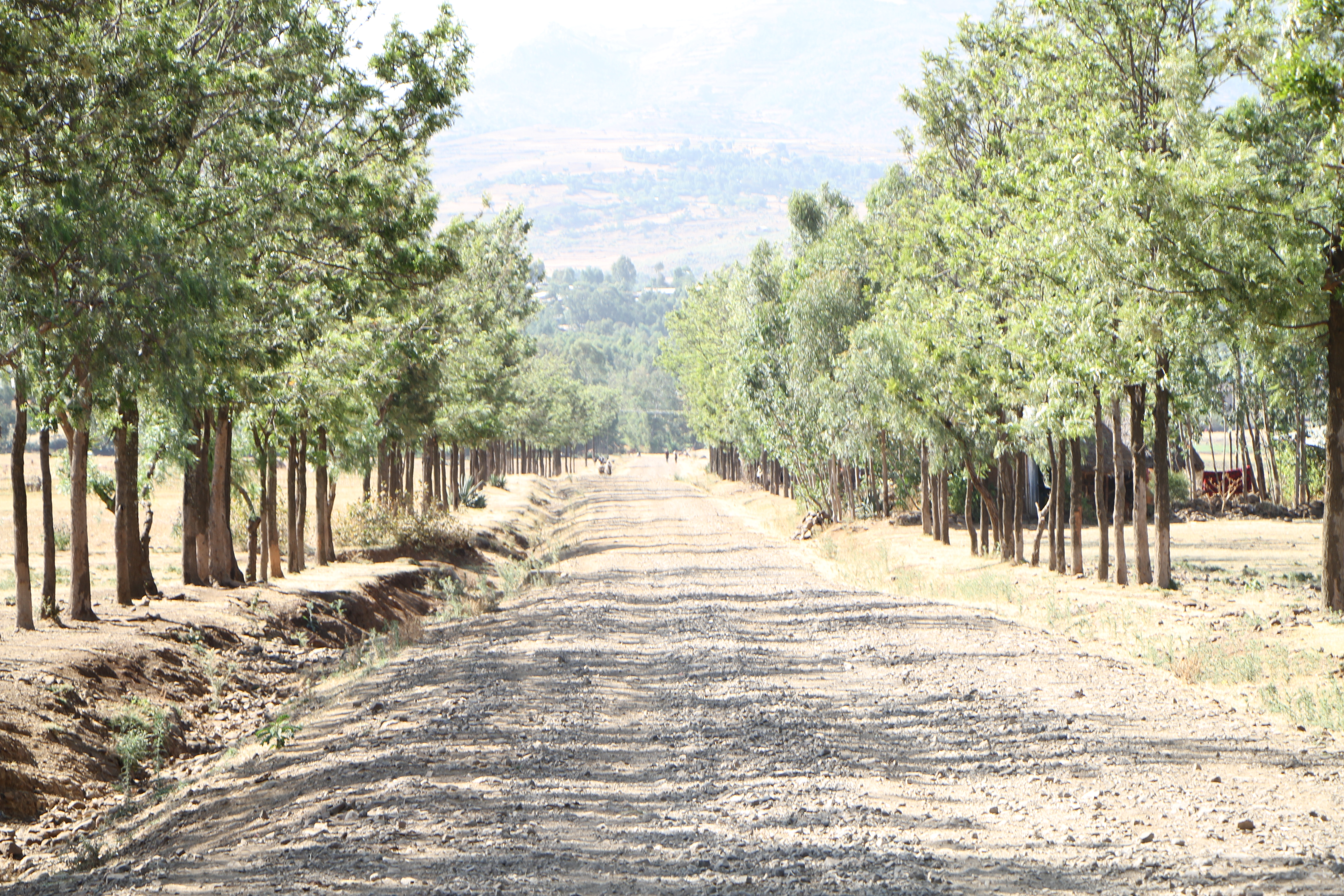
Despite the considerable benefits it brings, roadside vegetation is rarely integrated in road building programs. However, this is highly recommended, prryicularly for unpaved roads. Detailed planning for roadside vegetation should be developed as part of road development programs – indicating preferable planting options for the different roadside stretches. It is also important to actively engage the local community for purposes of management and to identification of tree species that will provide economic and environmental benefits. Some useful trees for roadside plantations are: Grevillea robusta, Moringa oleifera, Azadirachta indica (neem), Melia volkensii. Generally, trees should be fast-growing, evergreen, tolerant to drought, and have considerale economic or social value.
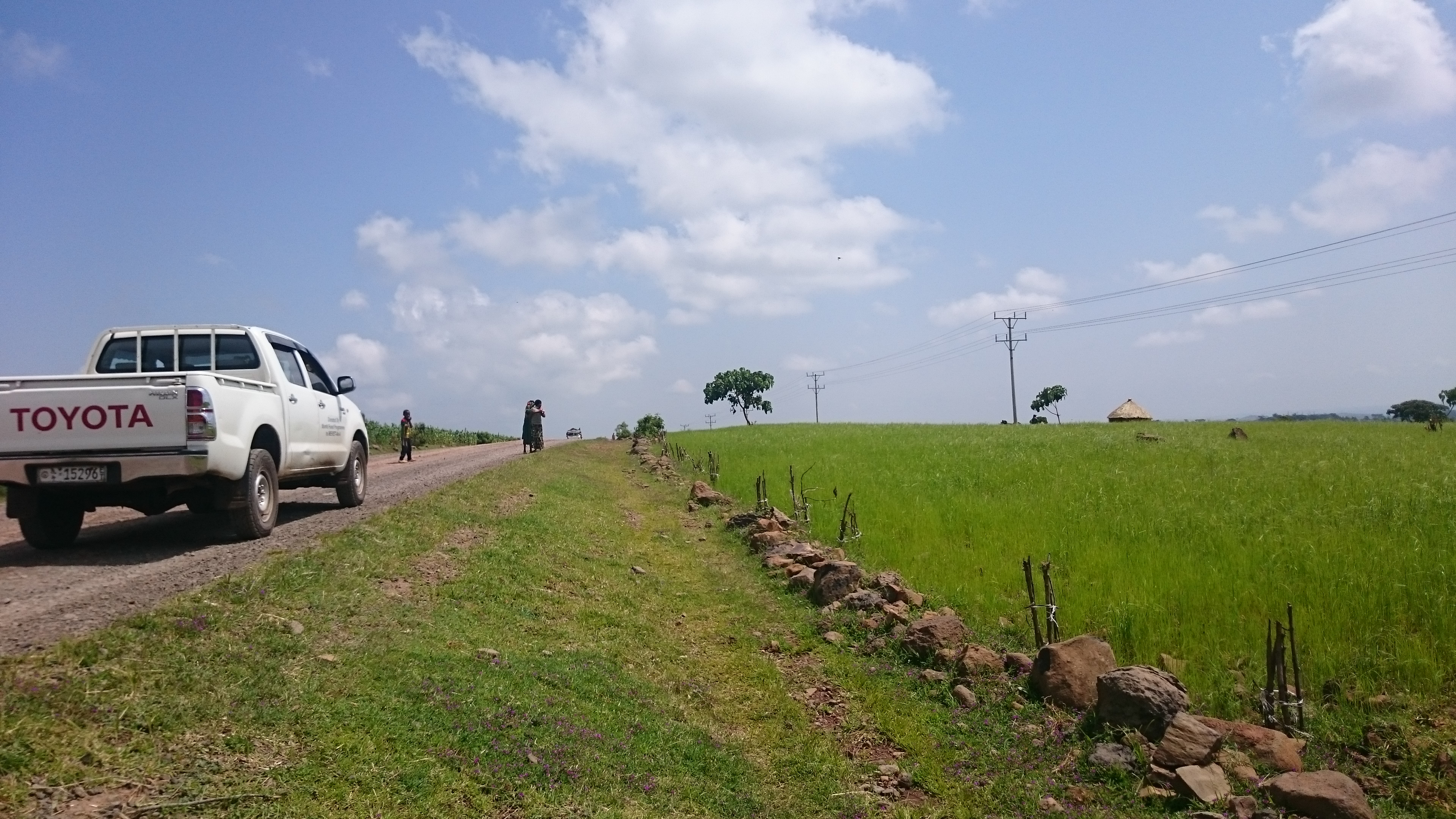
Saplings planted along stretch of a rural road in Amhara Provincem Ethiopia, with participation of road-adjacent communities
Roadside plantations have been implemented since 2015 by the regional agricultural bureaus in Amhara and Tigray regions, Ethiopia, with great help from farmers. It is also important to consider where road side vegetation could be best located. It should not hamper visibility at bends in the road , thus jeopardizing road safety, particular where speeds in excess of 60 km per hour are reached.
Road water harvesting and roadside plantations should be combined, especially in low rainfall areas. Small diversion channels can be constructed to slowly divert surface flow from roadside drainage system toward the tree seedlings. These diversion structures can be combined with small storage structures around the trees to retain this water for the tree. Smaller bushes and grasses can complement water harvesting by slowing down the flow of drainage. Grasses will allow water to filter and trap sediments; thus restoring soils, reducing erosion, and improving hydrological soil conditions.
With the continued expansion of road construction in developing countries, the integration of roadside plantations and road development will have a significant impact on the livelihoods of road adjacent communities. When coupled with rural development and employment programs, roadside plantations can create jobs for unemployed or vulnerable members of the communities.
Further reading:
- Roadside planting in Ethiopia: turning a problem into an opportunity: http://www.scholink.org/ojs/index.php/se/article/view/640
- Quantifying the impacts of vehicle-generated dust: a comprehensive approach: https://openknowledge.worldbank.org/handle/10986/27891
 |  |
